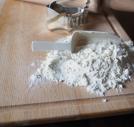MODY: One of Several Hereditary Forms of Diabetes
The most well-known variations of diabetes are type 1 diabetes and type 2 diabetes. Both type 1 and type 2 diabetes are polygenic, meaning that the development of the disease is the result of an interaction among several genes.
What is less known is that there are a variety of related diseases that don’t fall within these two diagnoses, but share many of the characteristics of diabetes. The difference between these variations is that each is the result of a mutation of a single gene (monogenic.)
MODY
MODY refers to Maturity Onset Diabetes of the Young, one of several hereditary forms of diabetes caused by a specific type of genetic mutation. This mutation may occur in any one of a number of different genes, and each gene’s mutation results in a slightly different variation of diabetes.
MODY is the diagnosis in 1 to 5 percent of diabetes cases. While MODY is generally diagnosed in later childhood, adolescence or early adulthood, many cases of MODY are not diagnosed until patients are in their 50s. There is also a significant risk of misdiagnosis. Since the differences in presentation of the disease can be subtle, patients are frequently misdiagnosed, at least initially, as either type 1 or type 2.
Types of MODY
HNF1A (MODY3) is the most common form of MODY. It is inherited and generally shows up early in life. Insulin is usually not immediately needed for treatment, as this disorder responds well to sulfonylureas.
GCK (MODY2) is the second most common type overall of MODY. (It might be the most common type suffered by children.) The presentation of symptoms is mild, with only slightly elevated blood sugars. These elevations, though, are generally present from birth.
HNF4A (MODY1) is an inherited, early-onset form of MODY that responds well to treatment using sulfonylurea pills.
INS (MODY10) can cause neonatal diabetes, antibody negative type 1 diabetes and MODY.
ABCC8 can also cause neonatal diabetes, but rarely leads to MODY. This may present mildly elevated blood glucose levels.
NEUROD1 (MODY6), KLF11 (MODY7), PAX4 (MODY9) and BLK (MODY11) are very rare forms of MODY.
IPF1 (MODY4) is another very rare form of MODY. This version can cause exocrine pancreatic insufficiency, or impairment of the digestive functions of the pancreas. The pancreas might also be very small.
CEL (MODY8) may cause exocrine pancreatic insufficiency, because the digestive functions of the pancreas are impaired by this version of MODY. Like MODY4, the pancreas might also be very small.
HNF1B (MODY5) can cause either diabetes or kidney problems. Individuals diagnosed with MODY5 may go on to develop diabetes or developmental problems with the kidneys (cysts are the most common finding.) The patient may develop diabetes or kidney disease. He or she may also have abnormalities of the reproductive organs.
Sources: National Institutes of Health and University of Chicago (2)
Photo: Pixabay



































